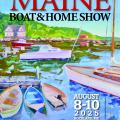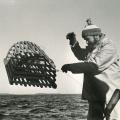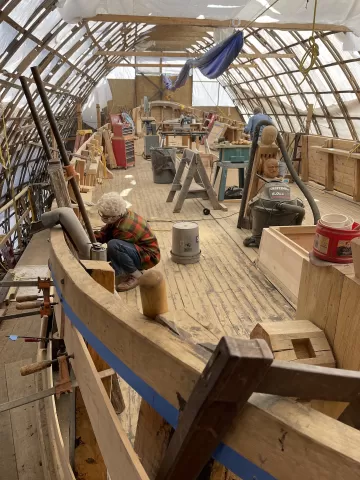
Mark your calenders! After 25 years of research, planning, and building, Maine’s First Ship, volunteer crew behind the sailing vessel Virginia, plans to launch the vessel June 4 on the Bath waterfront.
The 51-foot Virginia is a reconstruction of the first vessel built by English colonists in the Americas. The original wooden pinnace was built in 1607 at the mouth of the Kennebec River in the short-lived Popham Colony, at about the same time as colonists were settling Jamestown in Virginia. The pinnace originally was built for exploring the coast, but when the colony was abandoned in 1608, she carried the Popham colonists back to England. The sturdy vessel re-crossed the Atlantic in 1609 as part of a resupply convey headed for Jamestown.
On a recent spring day, the shed housing the boat hummed with activity as a dozen volunteers hustled to get the pinnace ready for its big day, sanding, hammering, and adjusting. Outside, a man was working on the huge rudder that had yet to be installed. The boat still needed some work, but lead shipwright Rob Stevens was confident of meeting the launch date.
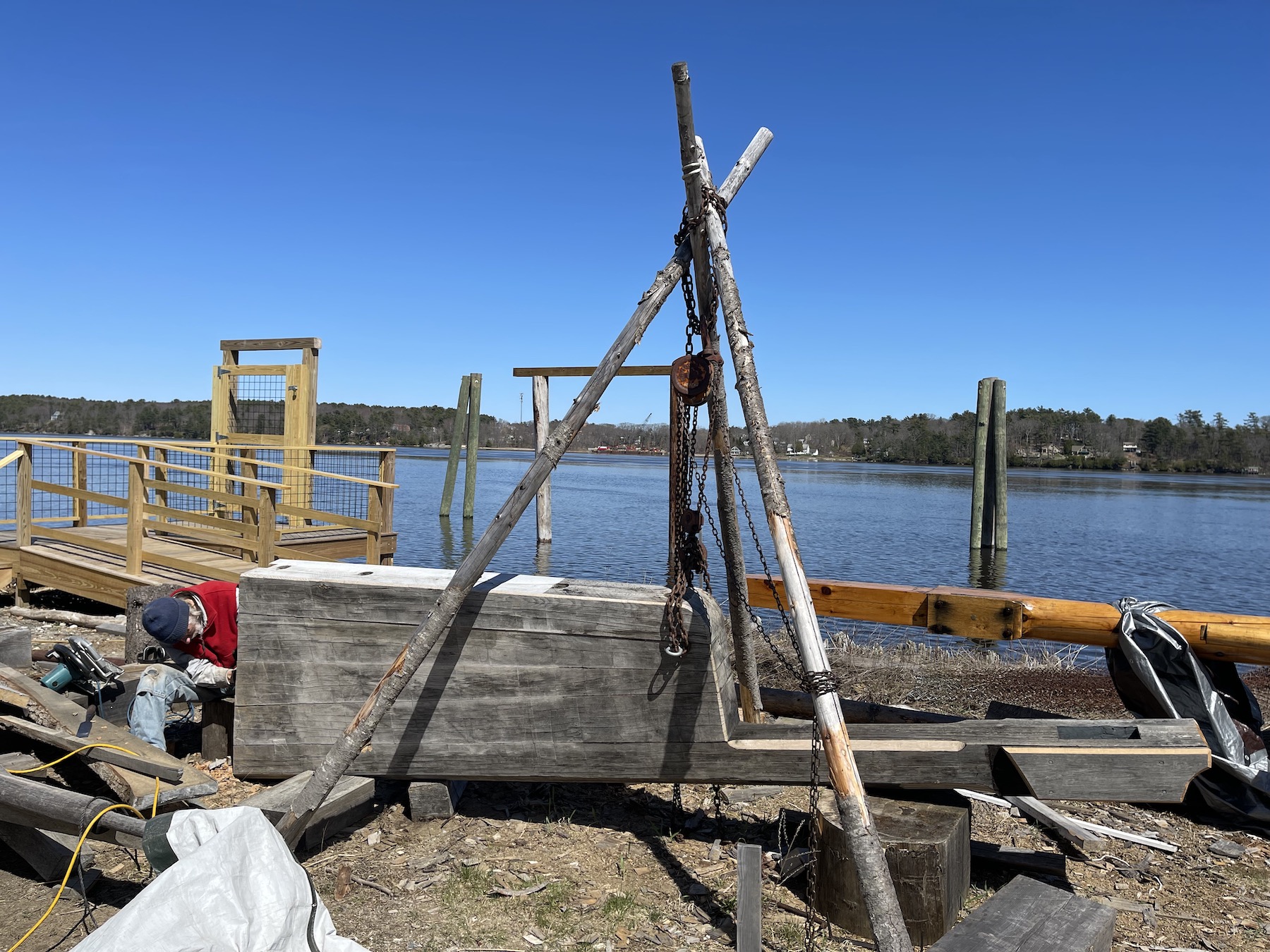
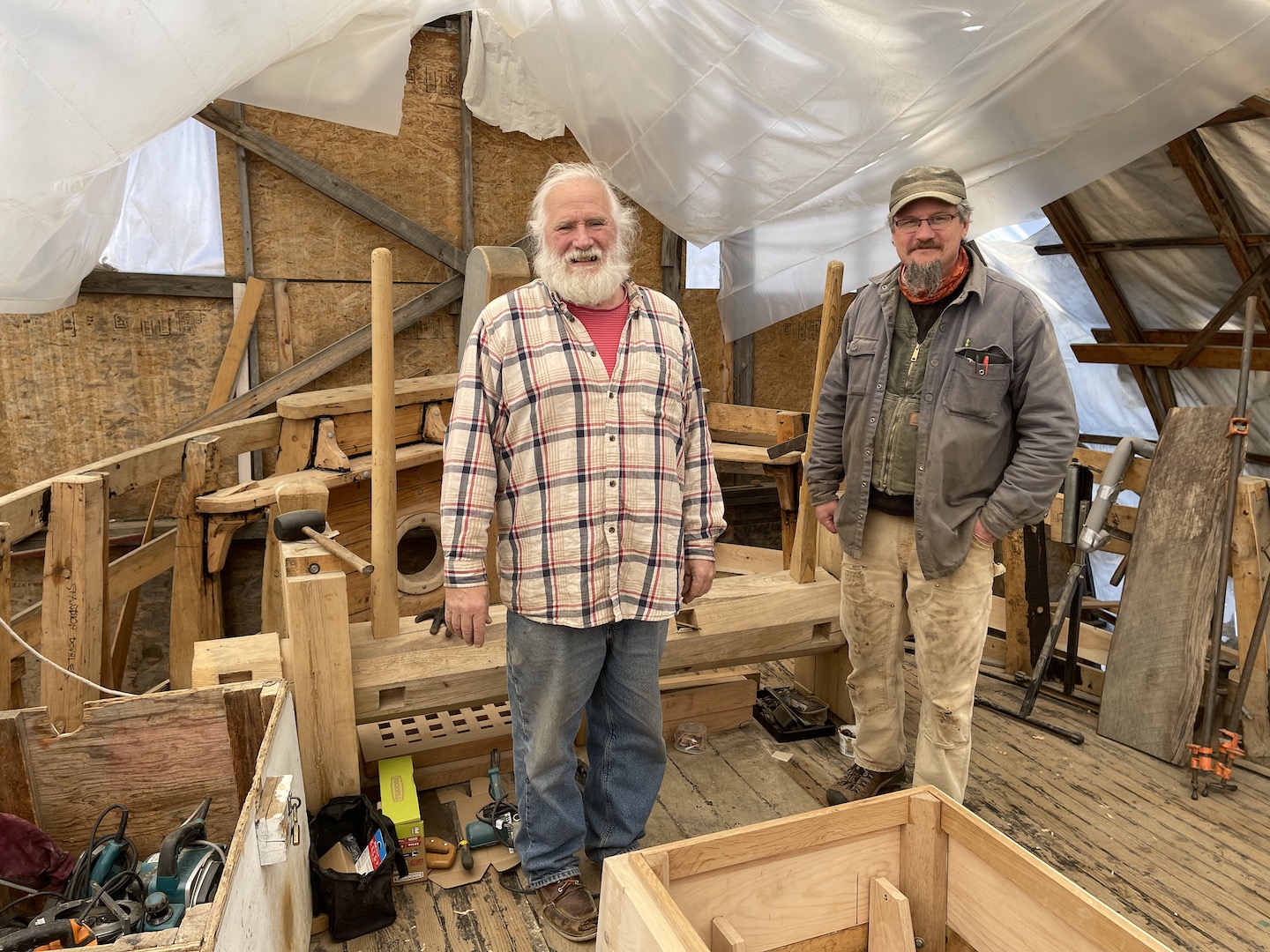
The keel for the Virginia was laid in 2011 after several years of planning. Coming up with the design was complicated because exact plans for the original boat do not exist. Hence the builders prefer to call this vessel a reconstruction, rather than a replica. The design team worked from written references to the ship and historical records of pinnaces. Enough detail was gathered for Fred M. Walker and Associates of Tenterdon, Kent, in England, to produce concept drawings. David B. Wyman, a naval architect, worked with the drawings to develop a working design with input from Capt. Steve Cobb, Stevens, and Maine’s First Ship historian, John Bradford.
Modified from a vessel that would have been used in the 17th century for ocean voyages, the Virginia is 51 feet long with a beam of 14.5 feet, and will draw about 6 feet when fully loaded. She has a single, flush deck, high sides that taper back to a narrow square stern and is totally open down below the deck. She will carry a fore and aft rig with a sprit mainsail.
The volunteer group has stuck with traditional materials as much as possible, using white oak, sourced from New England, for the hull and frames; white pine for the deck and masts; and hackmatack knees. Fastenings include old-fashioned trunnels and modern silicone bronze fasteners. The vessel will be painted with traditional paint sourced from Sweden, containing linseed oil and pigment, Stevens said, including a pattern of white and black arrow shapes along the bullwarks.
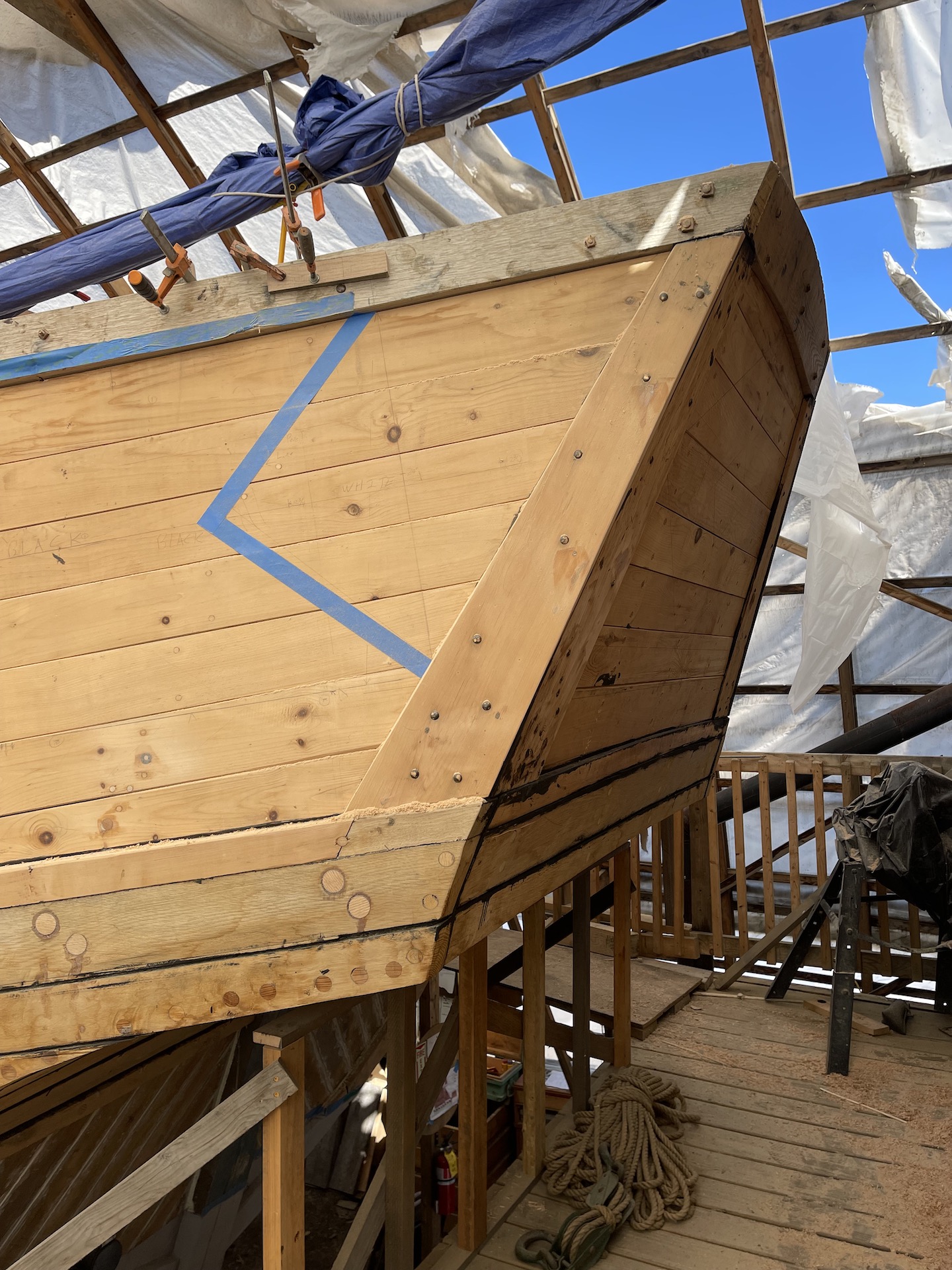
Historic records refer to the Virginia as a 30-tun vessel, but that doesn’t refer to its weight, Stevens explained, but rather to the number of 252-gallon barrels it could hold. The reconstructed vessel actually is about 20 percent bigger than the original— 36 tuns—Stevens said, because the organization hopes to get it certified to take school children on trips. “Tunnage is about cargo not weight,” he said. “A half-tun barrel is called a butt. Imagine how fun it will be to tell a bunch of school kids that they are going sailing on a 60-butt boat.”
The launching will take place near the Bath Freight Shed at 27 Commercial Street, where the non-profit Maine’s First Ship has been building the vessel. A crane will hoist the 80,000-pound hull into the water, according to Stevens. Then the masts will be stepped and the crew will spend the summer rigging the Virginia.
The launching celebration will span much of Commercial Street, including music, special guests, local food vendors, regional artists, and a marine-themed yard sale. Virginia is expected to splash into the Kennebec at 4:30 p.m., and then tie up at her dock at the Bath Freight Shed to begin rigging.
The freight shed has been home to Maine’s First Ship, a passionate group of volunteers, mostly amateur boat builders since 2007. The organization engages the public in an exploration of the region’s early history, craftsmanship, and relationships through the reconstruction of the 1607 pinnace with a visitor center, shipbuilding workshops, and educational programs.
Captions:
1) Working on the huge rudder
2) Shipwright Rob Stevens (left) and Jeremy Blaklocke who serves on Maine's First Ship's board
3) Virginia's square stern, with an area taped off for paint






